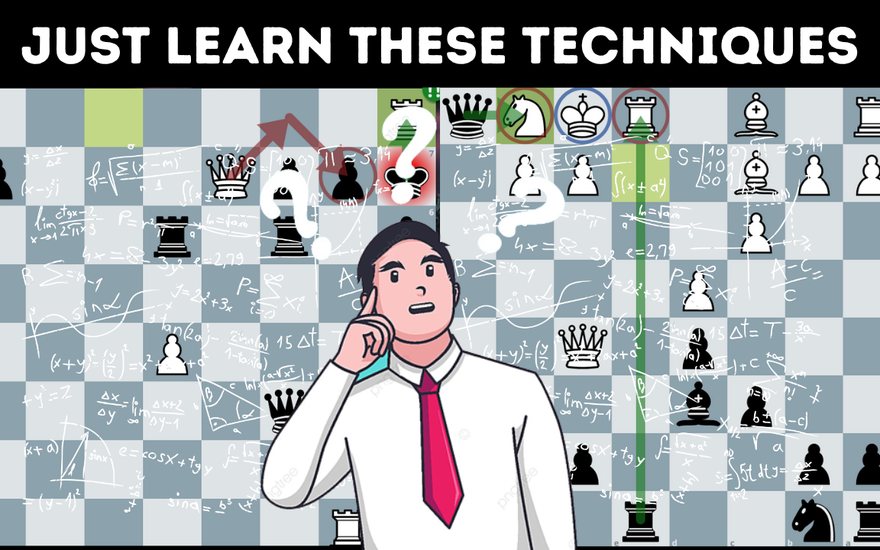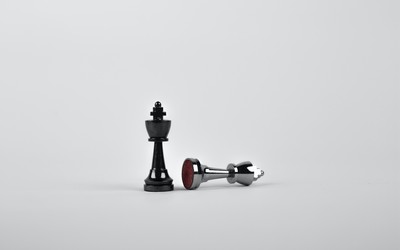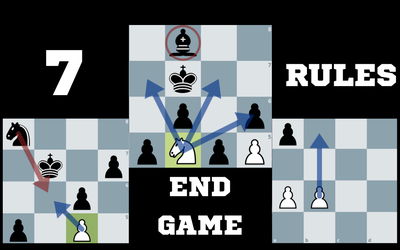
How to improve Chess Calculation (1500 - 2000 elo)
"Chess is 99% tactics" - Richard Teichmann4 Unique Ways to Boost Your Calculation
The chess game is divided into three parts: the opening, middle game, and endgame parts. The middle game part is the most crucial part of the game because that's where most of the results will be decided and this is a part of the game where our calculation skills will speak for themselves. Accurate calculation is a source of all success in chess, and the mark of strong chess players is that they have a very good ability to calculate the variations well. Today we're going to look with you 4 not common tips that can really impact on your calculation positively. Here we go!
Tip-1: Re-check your plan after observing the result your opponent's last move
It's usually a good idea to come up with your next move when your opponent's time is running because somehow you'll be familiar with the position, and you will prepare some sort of calculation when it's your opponent's move. The thing is that you should not ignore the importance of your opponent's last move because once he makes that move, you'll reach the final position, and there should definitely be some changes in the position.
Tip-2: Don't stop calculating until checks are over
Most often, players will calculate 1-2 moves, and they'll stop it quickly since they're seeing that the variation they're calculating will accomplish nothing. Sometimes it makes sense, but you need to see if there are still some checks left. If they are available on the board, for sure you need to go deeper and deeper to see what sort of position you'll end up with at the end.
Tip-3: Work on your visualization skill
The ability to calculate deeper variations heavily depends on your visualization skills. There would be situations during the game when you would kind of forget the placement of the piece after calculating three to four moves ahead, well, this amount simply tells you that you have some sort of work that needs to be done with your visualization skill. You probably saw that. Hikaru, usually on his streams or some YouTube videos, when he plays during the game or calculates some sort of tactic, usually looks up and then calculates; sometimes he shakes his head, but yeah, he basically calculates and figures out the best option. That is a process, and he will do that by looking up or looking somewhere. He usually tries to calculate all the moves like you're blindfolded, and the good news is that this skill can be learned by just about any chess player by following the right steps and, of course, by practicing. Practice is the key to success, so what would be my recommendation for you to improve your visualization skills? Well, the first thing is that you need to kind of start to solve the tactics where there are fewer pieces on the board. Visualizing the board with 10 to 15 pieces on it is tough. What you should do is start from the beginning, but slowly make it challenging for example of how you can do that: First, solve the tactic where there are three pieces on the board, then four pieces, five pieces, etc. reach the point where you are able to calculate tactics where there are 10 pieces on the board, and then you can move on to checkmate in one move. Checkmate in two moves, and after that, it's time for the patterns. You can start doing the tactics like fork, pin, and discovered attack because those patterns are kind of easy, and then slowly, slowly, you can go to the challenging one again. Maybe at the end, you can try out some sort of anhilation of defense or any other much more challenging pattern than the fork or pin. And basically, here you can see that what's going on is that you are kind of learning chess from scratch, but blindfolded, you see that you start the text in three moves, move to Checkmate in one move, and slowly work with the patterns. That's how the process will go, and after that, once you will do this sort of like a step, the practice, and then let's just try giving a shot for the blindfold game, well, definitely, it will be really not your best game when you try it out first, maybe 5–10 games, but practice makes things perfect. Try to find the partner, maybe from your school friend or from your friend at work, or maybe it could be your family members, whoever it is, doesn't matter, but what you will do with them when you're playing with them is give them the physical board and yourself just play blindfolded, and then after the game, try to ask them questions like where you really made a mistake, or just tell them to take them the note where you made an error, or where you even made an illegal move. From time to time, this sort of mistake will be gone, and you'll become closer to your goal. My recommendation that you start working with visualization would be this website: https://www.blindfold-chess-puzzles.com/ (P.S. This is not a promotion)
Tip-4: Play Chess 960/Fischer Random
When it comes to the difference between the Fischer random and the normal chess game, in a normal chess game, you can usually play those initial 10 or 15 moves on autopilot because you have the opening knowledge that you've memorized other things, and you're just playing, even without spending some seconds on the clock. But in chess 960, since it has a variety of positions, every time you'll start the game with a new position. There is no opening stage in Chess 960, and from the first move itself, you already need to start thinking. I would say playing Fischer chess is kind of like building Lego. You know, when we were young, we built some things with Lego. But everybody will build their own house or anything else with their own imagination. I think building something with Lego or playing Fischer chess has a connection; it's based on your creativity and plans. Everything is in your hands to build something special and interesting. You can improve your calculation by just playing chess 960 because the piece configurations are placed so well that it will give you the opportunity to do much more tactical motives; for example, the placement of the knight or the bishops will kind of give you new patterns or motives that you will not usually see in a classical chess game.
Thank you all for your time!
More blog posts by Millionaire_19

How to Stop Making Common Mistakes and Reach 1600
If you want to achieve a 1600 rating in rapid games, there are several key mistakes you should avoid…
Top 10 Middlegame Tips for Everyone
It's always good to know some theory that can result in getting better positions in the middle game,…
7 Endgame Principles Every Chess Player Should Know
The endgame is the grand finale of every chess game and victories are hard-earned. It's a place of m…